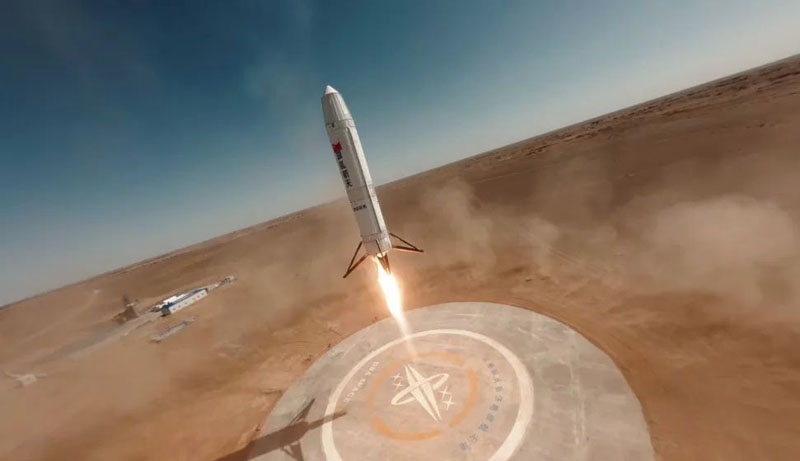China’s private space sector Deep Blue Aerospace’s Nebula-1 rocket attempted a high-altitude vertical recovery test flight on Sunday. The test, conducted in Inner Mongolia, aimed to showcase the potential of reusable kerosene-fueled rockets. However, the mission ended in a dramatic crash landing, highlighting the challenges that remain in this cutting-edge field.
The Nebula-1’s launch initially went according to plan. The rocket successfully completed 10 out of its 11 planned tasks, demonstrating the viability of its core systems. As it soared into the sky, powered by its three thrusters, onlookers might have been forgiven for thinking they were witnessing a flawless test flight.
As the Nebula-1 began its descent, two of its engines disengaged as planned. This critical phase was designed to test the rocket’s ability to transition from multiple engines to a single-engine variable thrust mode—a key capability for future orbital recovery missions.
As the Nebula-1 approached its launch pad, the landing system malfunctioned. The rocket touched down with excessive force, resulting in catastrophic damage. Images from the scene showed the top portion of the rocket snapped off, with the vehicle lying on its side and bearing signs of fire damage.
Deep Blue Aerospace took to Weibo to address the outcome. The company emphasized that while the test didn’t achieve complete success, it provided invaluable data for future recovery tests at altitudes over 100 kilometers. This perspective underscores the iterative nature of rocket development, where each setback offers lessons for future improvements.
The Nebula-1 test is part of a larger trend in China’s burgeoning commercial space industry. Private rocket startups are racing to develop innovative spacecraft, driven by the growing demand for satellite launch capabilities. This push is partly fueled by ambitions to create an alternative to Elon Musk’s SpaceX Starlink constellation.
Investors and developers in the space industry are increasingly turning their attention to alternative fuels like kerosene, methane, and liquid oxygen. These propellants offer the potential for more cost-effective and environmentally friendly launches—a crucial factor as the frequency of space missions continues to increase.
While the Nebula-1’s crash landing may have temporarily grounded Deep Blue Aerospace’s ambitions, it’s clear that the company’s efforts are part of a larger, unstoppable trend. We can expect more tests, more failures, and ultimately, more breakthroughs. In the race to the stars, it seems that even a rocky landing can’t keep these ambitious startups down for long.
